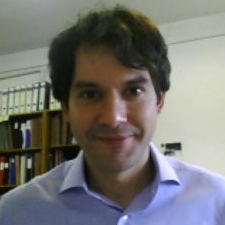Laser Interaction with Plasmonic Nanostructures
A special issue of Applied Sciences (ISSN 2076-3417). This special issue belongs to the section "Optics and Lasers".
Deadline for manuscript submissions: closed (30 June 2018) | Viewed by 26464
Special Issue Editors
Interests: nanoplasmonics; colloid chemistry; supramolecular chemistry; spectroscopy
Special Issues, Collections and Topics in MDPI journals
Special Issue Information
Dear Colleagues,
Plasmonics is the branch of science that deals with the interaction between the electromagnetic field and the free electrons in a metal, as well as their potential applications. In nanostructured metals this interaction produces the localized surface plasmon resonances (LSPR), which can be defined as the collective oscillation of conduction electrons in resonance with the incoming light. The LSPR can be tuned by changing parameters, such as the size, shape, and composition of the nanoparticles, but also the nature of the excitation source. For instance, under laser irradiation, the nanostructures act as nanolenses, inducing electromagnetic field enhancements in their surroundings that are several orders of magnitude larger than that of the incident field. We focus this Special Issue on the effects of this interaction that open new perspectives for designing novel devices and applications in a wide variety of fields. For instance, the combination of a continuous wave laser with plasmonic nanoparticles, as enhancement platforms, can be used either for efficient photothermal destruction of cancer cells, avoiding damage to tissues, or to perform surface enhanced Raman scattering (SERS) spectroscopies, a powerful analytic tool capable of single molecule detection. Likewise, pulsed lasers have been used to study the mechanisms of surface plasmon dynamics in metal nanoparticles but also to synthesize (laser ablation) or modify them. All the topics related to the interaction of lasers with plasmonic nanostructures, including, but not restricted to, the previous examples, are invited to this Special Issue.
Dr. Andrés Guerrero-Martínez
Dr. Ovidio Peña-Rodríguez
Guest Editors
Manuscript Submission Information
Manuscripts should be submitted online at www.mdpi.com by registering and logging in to this website. Once you are registered, click here to go to the submission form. Manuscripts can be submitted until the deadline. All submissions that pass pre-check are peer-reviewed. Accepted papers will be published continuously in the journal (as soon as accepted) and will be listed together on the special issue website. Research articles, review articles as well as short communications are invited. For planned papers, a title and short abstract (about 100 words) can be sent to the Editorial Office for announcement on this website.
Submitted manuscripts should not have been published previously, nor be under consideration for publication elsewhere (except conference proceedings papers). All manuscripts are thoroughly refereed through a single-blind peer-review process. A guide for authors and other relevant information for submission of manuscripts is available on the Instructions for Authors page. Applied Sciences is an international peer-reviewed open access semimonthly journal published by MDPI.
Please visit the Instructions for Authors page before submitting a manuscript. The Article Processing Charge (APC) for publication in this open access journal is 2400 CHF (Swiss Francs). Submitted papers should be well formatted and use good English. Authors may use MDPI's English editing service prior to publication or during author revisions.
Keywords
-
Plasmonics
-
metal nanostructures
-
continuous wave laser
-
pulse laser
-
SERS
-
laser ablation
-
plasmonic photothermal therapy






